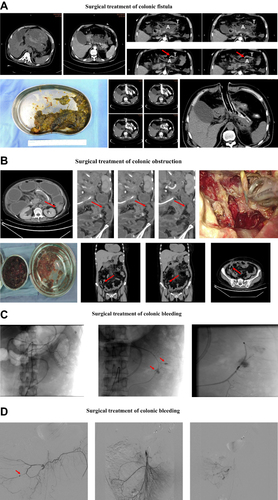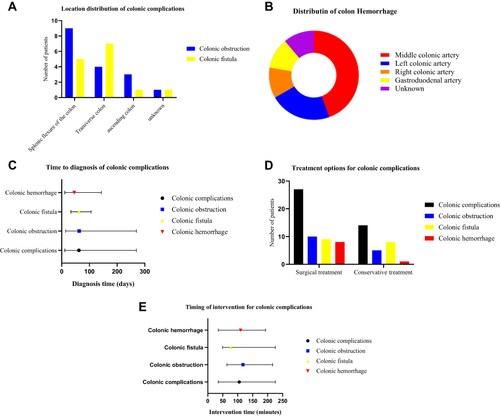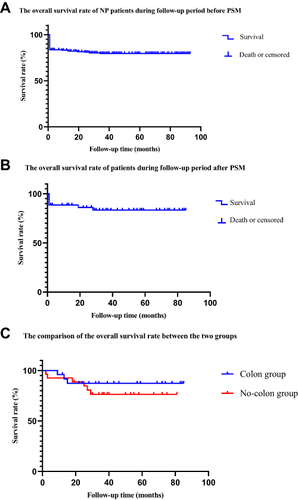Figures & data
Table 1 Definitions of the Observation Indicators
Table 2 Characteristics of the Necrotizing Pancreatitis Patients
Table 3 Comparison of Clinical Outcomes Between Two Groups Before PSM
Table 4 Baseline Data of the Two Groups After PSM
Table 5 Comparison of Clinical Outcomes Between Two Groups After PSM
Table 6 The Long-Term Complication Between the Two Groups During the Follow-Up Period
Table 7 Quality of Life Rating Scale During the Follow-Up Period of Surviving Patients
Banks PA, Bollen TL, Dervenis C, et al.; Acute Pancreatitis Classification Working Group. Classification of acute pancreatitis--2012: revision of the Atlanta classification and definitions by international consensus. Gut. 2013;62(1):102–111. doi:10.1136/gutjnl-2012-302779. Balthazar EJ, Ranson JH, Naidich DP, Megibow AJ, Caccavale R, Cooper MM. Acute pancreatitis: prognostic value of CT. Radiology. 1985;156(3):767–772. doi:10.1148/radiology.156.3.4023241 Pando E, Alberti P, Hidalgo J, et al. The role of extra-pancreatic infections in the prediction of severity and local complications in acute pancreatitis. Pancreatology. 2018;18(5):486–493. doi:10.1016/j.pan.2018.05.481 Brown LA, Hore TA, Phillips AR, Windsor JA, Petrov MS. A systematic review of the extra-pancreatic infectious complications in acute pancreatitis. Pancreatology. 2014;14(6):436–443. doi:10.1016/j.pan.2014.09.010 Mederos MA, Reber HA, Girgis MD. Acute pancreatitis: a review. JAMA. 2021;325(4):382–390. doi:10.1001/jama.2020.20317 Beyer G, Habtezion A, Werner J, Lerch MM, Mayerle J. Chronic pancreatitis. Lancet. 2020;396(10249):499–512. doi:10.1016/S0140-6736(20)31318-0 



